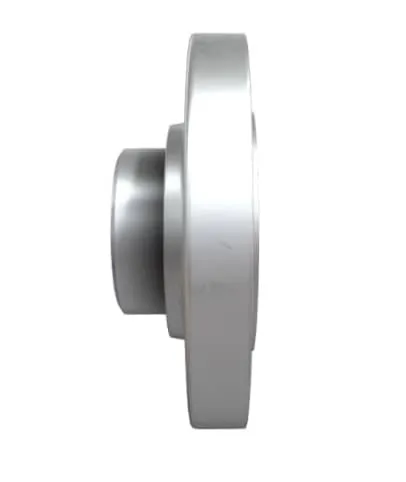-
Cangzhou Yulong Steel Co., Ltd.
-
Phone:
+86 13303177267 -
Email:
admin@ylsteelfittings.com
- English
- Arabic
- Italian
- Spanish
- Portuguese
- German
- kazakh
- Persian
- Greek
- French
- Russian
- Polish
- Thai
- Indonesian
- Vietnamese
- Zulu
- Korean
- Uzbek
- Hindi
- Serbian
- Malay
- Ukrainian
- Gujarati
- Haitian Creole
- hausa
- hawaiian
- Hebrew
- Miao
- Hungarian
- Icelandic
- igbo
- irish
- Japanese
- Javanese
- Kannada
- Khmer
- Rwandese
- Afrikaans
- Albanian
- Amharic
- Armenian
- Azerbaijani
- Basque
- Belarusian
- Bengali
- Bosnian
- Bulgarian
- Catalan
- Cebuano
- China
- China (Taiwan)
- Corsican
- Croatian
- Czech
- Danish
- Esperanto
- Estonian
- Finnish
- Frisian
- Galician
- Georgian
- Kurdish
- Kyrgyz
- Lao
- Latin
- Latvian
- Lithuanian
- Luxembourgish
- Macedonian
- Malgashi
- Malayalam
- Maltese
- Maori
- Marathi
- Mongolian
- Myanmar
- Nepali
- Norwegian
- Norwegian
- Occitan
- Pashto
- Dutch
- Punjabi
- Romanian
- Samoan
- Scottish Gaelic
- Sesotho
- Shona
- Sindhi
- Sinhala
- Slovak
- Slovenian
- Somali
- Sundanese
- Swahili
- Swedish
- Tagalog
- Tajik
- Tamil
- Tatar
- Telugu
- Turkish
- Turkmen
- Urdu
- Uighur
- Welsh
- Bantu
- Yiddish
- Yoruba

Sep . 22, 2024 06:05 Back to list
flange 18 ansi 150
Understanding Flange Standards ANSI 150 and Its Applications
Flanges are essential components in piping systems, providing a reliable means of joining two sections of pipe, as well as allowing for easy disassembly when necessary. The American National Standards Institute (ANSI) has established several standards for flanges, and among these, ANSI 150 is particularly noteworthy. This article explores the key features, specifications, and applications of ANSI 150 flanges.
Originally developed to standardize the dimensions and capabilities of flanges for broader industrial use, ANSI 150 flanges represent a specific pressure class that allows for a range of applications across various sectors, including water treatment, oil and gas, and chemical processing. The designation 150 refers to the flange's pressure rating, indicating that it is designed to handle internal pressures up to 150 psi (pounds per square inch) at a standard temperature. This capability makes ANSI 150 flanges suitable for low to moderate pressure applications.
Dimensions and Face Types
ANSI 150 flanges adhere to specific dimensional standards, which ensure compatibility and interchangeability within the systems they are used in. These dimensions include parameters such as the flange's outer diameter, bolt holes, and thickness. ANSI 150 flanges are available in various face types, primarily raised face (RF) and flat face (FF). The raised face type is the most common, characterized by a slight elevation in the flange's center, which creates a better seal when paired with a gasket. This design is particularly advantageous in applications where sealing integrity is crucial.
Material Selection
flange 18 ansi 150

The materials used for ANSI 150 flanges can vary widely, including carbon steel, stainless steel, and alloy materials. The choice of material is influenced by the operating environment, such as exposure to corrosive substances or high temperatures. For instance, stainless steel flanges are often preferred in chemical processing due to their enhanced corrosion resistance. Choosing the right material not only impacts performance but also influences the durability and longevity of the flanges.
Applications Across Industries
The versatility of ANSI 150 flanges allows them to be employed in various industries. In water treatment facilities, these flanges are commonly used to connect pipes and control valves in treatment systems. In the oil and gas industry, they serve crucial roles in upstream extraction processes and downstream distribution networks. The chemical processing industry benefits from ANSI 150 flanges for their reliability in handling different substances under varying pressure conditions.
Conclusion
In summary, ANSI 150 flanges are a vital part of modern piping systems, enabling efficient and secure connections between pipe sections under moderate pressure conditions. Their standardized dimensions, adaptable materials, and diverse applications across industries make them an indispensable choice for engineers and designers alike. Understanding the specifications and applicability of ANSI 150 flanges can greatly enhance the efficacy and reliability of any piping system, underpinning the safe and efficient transportation of fluids in myriad industrial contexts. As industries evolve, the importance of maintaining high standards, such as those outlined by ANSI, will continue to be paramount in ensuring the integrity of piping systems worldwide.
Latest news
-
ANSI 150P SS304 SO FLANGE
NewsFeb.14,2025
-
ASTM A333GR6 STEEL PIPE
NewsJan.20,2025
-
ANSI B16.5 WELDING NECK FLANGE
NewsJan.15,2026
-
ANSI B16.5 SLIP-ON FLANGE
NewsApr.19,2024
-
SABS 1123 FLANGE
NewsJan.15,2025
-
DIN86044 PLATE FLANGE
NewsApr.19,2024
-
DIN2527 BLIND FLANGE
NewsApr.12,2024
-
JIS B2311 Butt-Welding Fittings LR/SR 45°/90° /180°Seamless/Weld
NewsApr.23,2024











